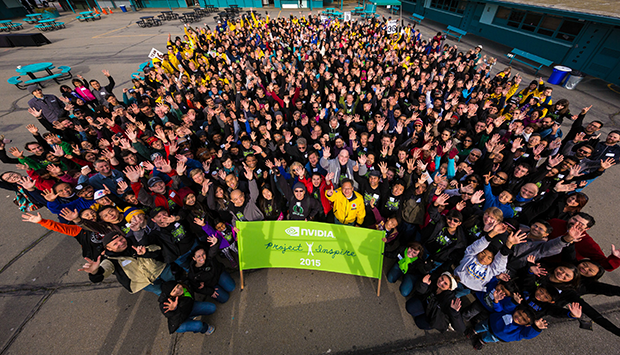Business education programs teach us about how organizations should be conducted in order to create value for stakeholders. Since more than a decade, they also constantly remind business students about the fast pace of change in our new global and hyper-competitive environment.
All the notions, concepts and theories learnt through these programs are without any doubt useful to best deal with business responsibilities and challenges. Some are even critical and require students to be in a position to understand them such as strategic options for growth, transaction cost, financial analysis, and organizational behavior. But there is a question that students constantly ask themselves: how can I turn these great insights into action, make a difference and create value?
I too decided to pursue an MBA after years of experience in the high-tech industry as a design engineer. But my thoughts and feelings about working in organizations really changed when I started to work at NVIDIA. This is exactly what we need after an MBA: a company where we can apply and use all those great insights and knowledge and a place where we can learn things that cannot be taught in a classroom.
Usually managers try to develop the right vision, to define the perfect company mission and to anticipate by motivating their people, by keeping the cost under control and by using their strategic capabilities to add more value than competitors.
But how many really succeed over time? And after all, what would be the best way to drive a business today compared to the time we invented the scientific management, about a century ago? What is the management style that really works today?
NVIDIA went from the 50th position in its industry in early 90s to the top leader in visual computing employing now over 9000 people around the globe and making a profit that often beats estimates. The company has a great reputation and so many talented and innovative engineers are willing to work there. The reason is not only because NVIDIA is one of the best paying high-tech companies in terms of salary. And not only because engineers are interested in working with breakthrough technology that the company develops. There is more.
The company has proven a high level of flexibility in strategic change and succeeded in reducing its exposure to a declining PC market in the space of a few years. It then successfully entered many new, high potential and growing segments through related diversification of its GPU technology.
Each time the leaders decide for a change, the whole company follows as one single and supportive block. People put their trust on their leaders’ vision. The opposite happened to Kodak. The company had overlooked the new digital trend by sticking to its original plan. And even when they decided to go digital, only one third of the employees was convinced this was the way to go. Not enough support from employees and, mainly too late. We know the end of the story.
In our today’s environment, businesses need to move at the speed of light to build and to maintain competitive advantage. Leaders need to convince, to motivate the whole organization to support strategic changes. And NVIDIA has the charismatic leader who really inspires its people. But there is still more.
Many organizations started to follow the new sustainability trends when the United Nations came up with the global compact in early 2000s.
Some like Timberland took this as an opportunity to rethink their business in order to meet new expectations, some other started greenwashing and many others stood in the middle.
Being socially responsible is more than philanthropy, which is not a new concept. Being socially responsible is rather responding to our new world’s expectations and needs.
What I saw at NVIDIA Foundation was a unique way of setting a culture that involved and motivated employees, satisfied communities wherever the company was operating.
Through project inspire, since 2001, NVIDIA has taken the money it would spend on a holiday party and invested it into a community projects where employees and their families volunteer side-by-side with the community to help transform a local resource. Project Inspire has become a much-loved tradition for company employees and their families.
These activities, driven by employees, created an internal and unbelievable self-motivating climate. Employees massively adhere, participate, donate, go and meet with communities, find new needs and respond to those needs over the week-ends and even sometimes during work hours. They get a kick out of what they achieve there.
Many companies keep on trying: Pepsi decided to take the money budgeted for its annual Super Bowl ad, and instead of running an ad, devoted this money to social causes. However, despite many successful aspects, managers and analysts were skeptical about the positive impact of the project on revenues. Pepsi finally replaced the project.
NVIDIA project inspire has been successful for years and keep on creating value for all company stakeholders. It’s an inside-out type of action handled not only by a team but rather by all company employees who volunteer to be part of the project.
Each business has its own DNA and actions that would fit one will not obligatory work for the others. Company culture must come from the top of organizations and should be promoted by all the managers and team leaders.
So how you will set your own company culture? Many solutions exist, you need to find yours asap.
Disclosure:
I’m a former NVIDIA employee, wrote this article myself and it expresses my own opinions. I am not receiving compensation for it. I have no business relationship with any company mentioned in this article.


Commentaires récents